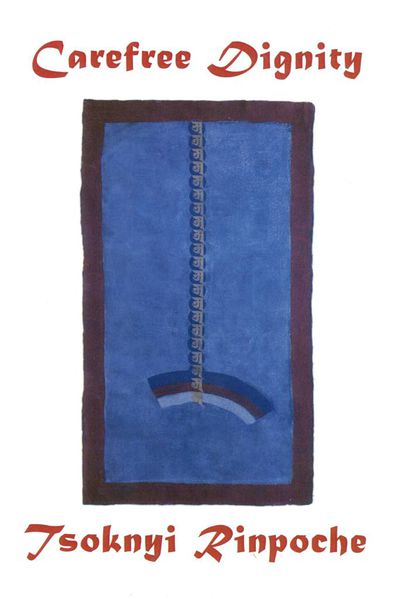(Created page with "{{Book |FullTextRead=No |BookToc=*{{i|''Dedication''|7}} *{{i|''Foreword''|9}} *{{i|Open and Free|13}} *{{i|Ground|22}} *{{i|View|35}} *{{i|Beginning Meditation|53}} *...") |
No edit summary |
||
| Line 24: | Line 24: | ||
*{{i|''Afterword''|235}} | *{{i|''Afterword''|235}} | ||
|AddRelatedTab=No | |AddRelatedTab=No | ||
|PublisherLogo=File:Rjyp logo.png | |||
|StopPersonRedirects=No | |StopPersonRedirects=No | ||
}} | }} | ||
Revision as of 14:50, 20 November 2020
In this book I will outline ground, path and fruition in the hope of helping you gain some understanding about your basic nature, your own mind. This nature of mind is always present, and it can be called different names: the natural state, the basic nature, the real condition, the enlightened essence, or buddha-nature. This basic nature is what is meant by ground.
Path is a state of confusion which is not recognizing this ground, our basic state, to be as it is. Conceptual mind and time are both present during the path. But when your mind is pure, free of these, that is called fruition, and that is what is to be attained. To reiterate, confusion is called path. This confusion can be cleared up. There are three methods to clarify confusion: view, meditation and conduct. By means of the view, meditation and conduct we reveal what is already present. Slowly and gradually, we uncover more and more of the basic state. This process is what I will try to explain. (Tsoknyi Rinpoche, chapter 1, 20–21)
| Citation | Tsoknyi Rinpoche. Carefree Dignity: Discourses on Training in the Nature of Mind by Drubwang Tsoknyi Rinpoche. Compiled and translated by Erik Pema Kunsang and Marcia Binder Schmidt. Edited by Kerry Moran. Hong Kong: Rangjung Yeshe Publications, 1998. https://archive.org/details/carefreedignitydiscoursesontraininginthenatureofmindbytsoknyirinpocheed.keerrymoranrupaco._107_f. |
|---|---|


